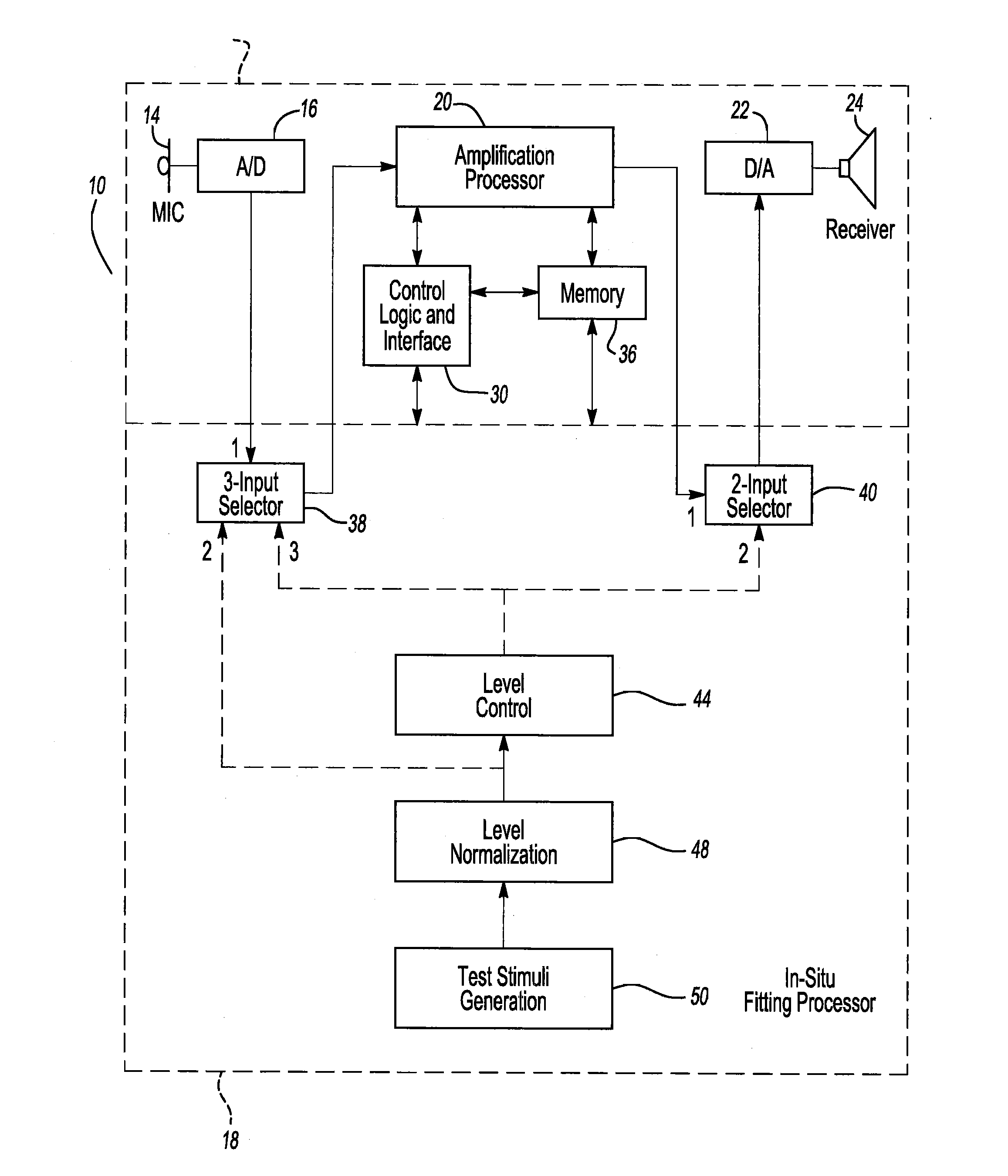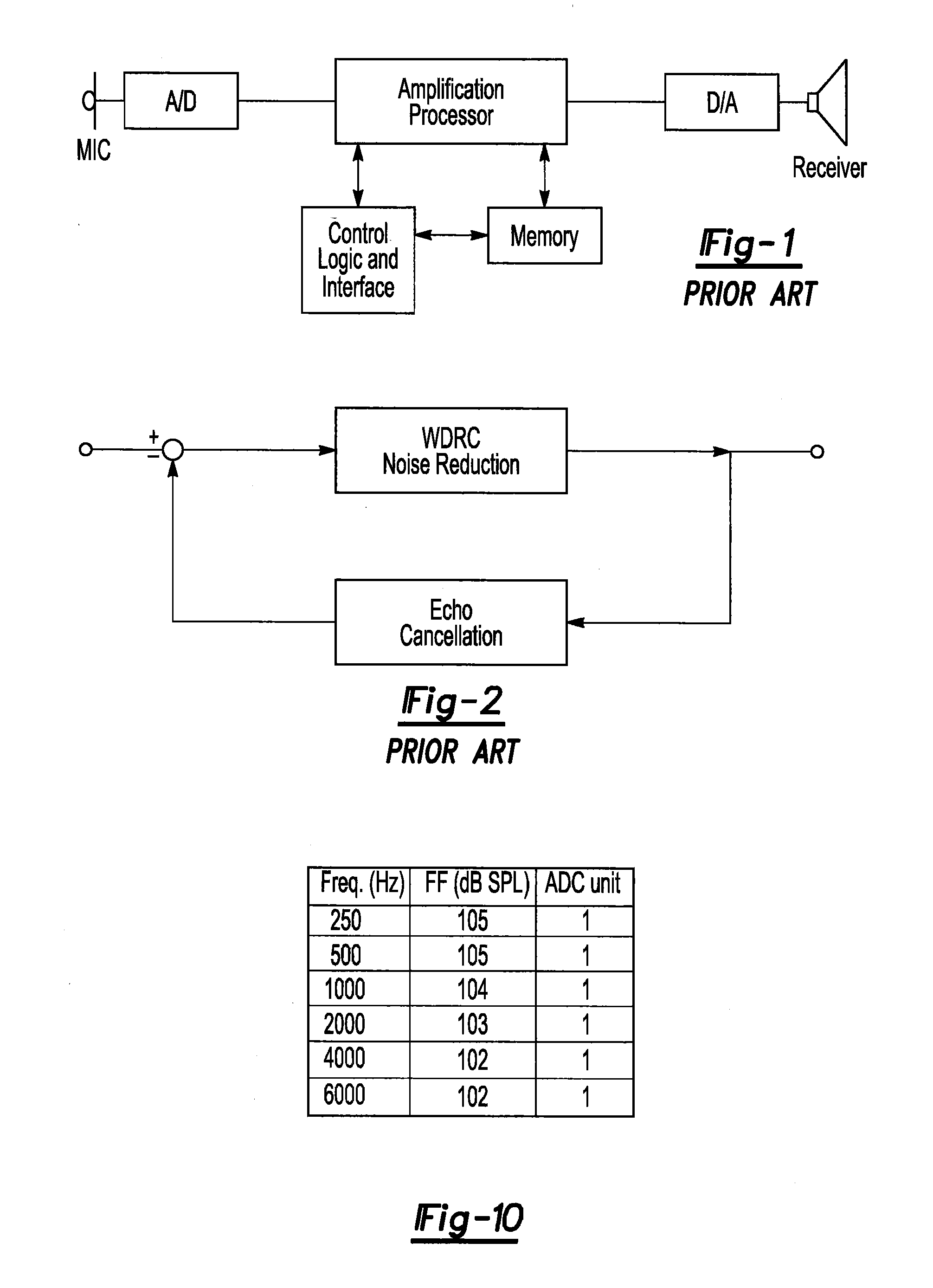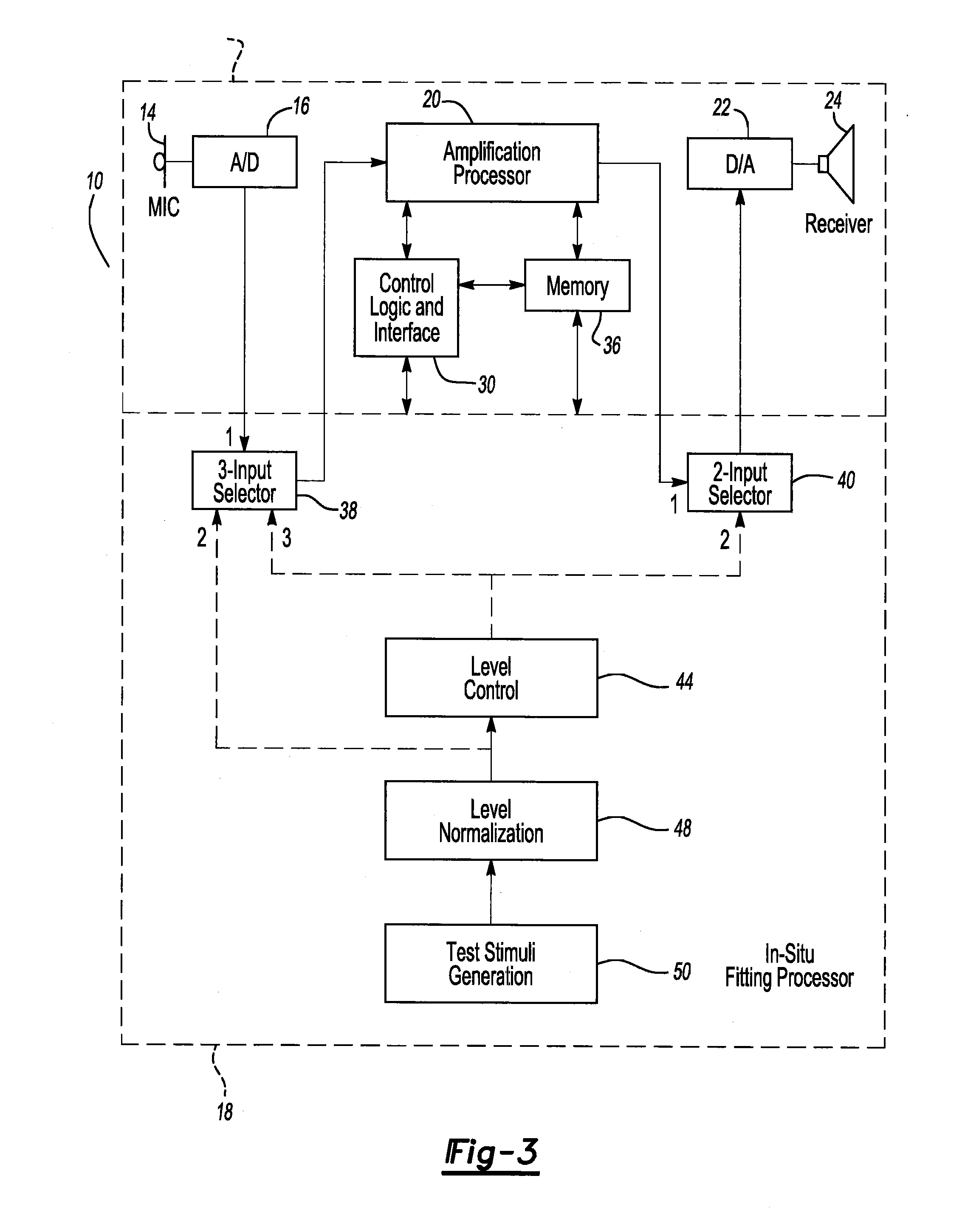Method and apparatus for in-situ testing, fitting and verification of hearing and hearing aids
a technology for hearing aids and in-situ testing, which is applied in the direction of electrical devices, deaf aid adaptation, etc., can solve the problems of not producing a flat insertion gain for users, not considering the individual size differences of pina and ear canal, and less accurate fitting
- Summary
- Abstract
- Description
- Claims
- Application Information
AI Technical Summary
Benefits of technology
Problems solved by technology
Method used
Image
Examples
Embodiment Construction
[0036]As known in the art, a microphone is an acoustic-to-electric transducer or sensor that converts sound into an electrical signal. Most microphones today use electromagnetic induction, piezoelectric generation, or light modulation, to produce an electrical voltage signal from mechanical vibration. While any of these types of microphones may be used in the present invention, a condenser microphone is preferred.
[0037]For a given sound input, most usually measured in decibels (dB), a microphone manufacturer will know the electrical signal produced thereby, normally in the millivolt (mV) range. This value is sometimes, when converted into digital units via an analog to digital converter, referred to in the art in terms of ADC units per Pascal. Because most microphones are calibrated to tight standards, for a given ADC unit, the sound pressure (SP) in decibels will be known to ±3 dB.
[0038]The present invention not only uses this property, but does so in a novel and unique way to prov...
PUM
 Login to View More
Login to View More Abstract
Description
Claims
Application Information
 Login to View More
Login to View More - R&D
- Intellectual Property
- Life Sciences
- Materials
- Tech Scout
- Unparalleled Data Quality
- Higher Quality Content
- 60% Fewer Hallucinations
Browse by: Latest US Patents, China's latest patents, Technical Efficacy Thesaurus, Application Domain, Technology Topic, Popular Technical Reports.
© 2025 PatSnap. All rights reserved.Legal|Privacy policy|Modern Slavery Act Transparency Statement|Sitemap|About US| Contact US: help@patsnap.com



